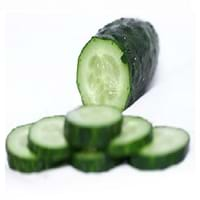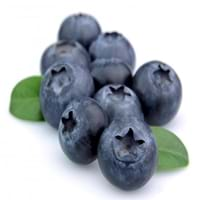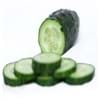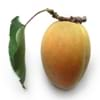Health Benefits
Arthritis treatment, Cancer prevention, Eczema treatment, Increases metabolic rate, Kidney stone treatment, Prevents constipation, Removes toxic metals, Treatment of alzheimer's disease
Cancer prevention, Heart care, Increases metabolic rate, Strengthening of bones, Treatment of skin Diseases
General Benefits
Anti oxidant properties, Anti-inflammatory properties, Controls blood pressure, Digestive aid, Strengthens bones, Treatment of sore eyes
Anti oxidant properties, Boosts immune system, Digestive aid, Eye care, Improves blood circulation, Sore throat treatment
Skin Benefits
Heals sunburn, Hydrates skin, Skin rejuvenation, Skin revitalization, Treatment of dark spots, Treatment of skin diseases
Anti-aging benefits, Reduces wrinkles, Skin rejuvenation, Treatment of skin diseases
Hair Benefits
Promotes longer and healthier hair, Protects hair, Regulates hair growth, Shiny hair
Protects hair
Allergy Symptoms
Breathing difficulty, Decrease in blood pressure, Diarrhea, Itching, Red rash, Runny nose, Sneezing, Vomiting, Watery eyes
Abdominal pains, Coughing, Diarrhea, Itching, Runny nose, Sneezing, Swelling of mouth, tongue or lips, Wheezing
Side Effects
Stressed heart, Irritation, Swelling, Swelling around mouth, Throat swelling, Tongue swelling, Strained blood vessels
Allergic reaction
Lactating Women
Not Available
Yes
Best Time to Eat
Along with meal, As a snack in the late afternoon, Eat the fresh ones, avoid mixing with any other foods, don't eat after meal., Strictly avoid empty stomach
Best if taken as a breakfast (or empty stomach), As a snack in the late afternoon, Don't consume at night and before bed, Eat the fresh ones, avoid mixing with any other foods, don't eat after meal., Morning time (before lunch)
Vitamin A (Retinol)
Not Available
Vitamin B5 (Pantothenic Acid)
Not Available
Vitamin B6 (Pyridoxin)
Not Available
Vitamin B9 (Folic acid)
Not Available
Vitamin C (Ascorbic Acid)
Vitamin E (Tocopherole)
Not Available
Vitamin K (Phyllochinone)
Not Available
Lutein+Zeaxanthin
Not Available
Phytosterol
Not Available
Calories in Fresh Fruit with Peel
Calories in Fresh Fruit without Peel
Not Available
Calories in Frozen Form
Not Available
Not Available
Calories in Dried Form
Not Available
Not Available
Calories in Canned Form
Not Available
Not Available
Calories in Juice
Not Available
Calories in Jam
Not Available
Calories in Pie
Not Available
Type
Fruit vegetable, Melon
Berry
Season
Spring, Summer
Summer
Varieties
Armenian, English, Garden, Kirby, Lemon and Persian
Dwarf Huckleberry, Cascade Huckleberry, Mountain huckleberry and Blackwinter Huckleberry
Color
Dark green, Green
Blue, Purple, Purplish black
Inside Color
White
Purple
Taste
Juicy, Watery
Sweet
Origin
India
North America
Grows on
Vines
Not Available
Soil Type
Loam
Loamy, Sandy, Well-drained
Climatic Conditions
Warm
Humid, Warm
Facts about
- Outer waxy coating of cucumber can erase the pen writing.
- Pressing cucumber on roof of mouth for 30 sec will eliminate bad breath.
- It is made up of 96% water.
- English cucumber can grow longer than 2 feet.
- "I'm your huckleberry" is a way of saying that one is just the right person for a given job.
- The phrase "a huckleberry over my persimmon" was used to mean "a bit beyond my abilities".
Top Producer
China
United States of America
Other Countries
Egypt, Indonesia, Iran, Japan, Russia, Spain, Turkey, Ukraine, United States of America
Canada
Top Importer
France
Canada
Botanical Name
Cucumis sativus
Gaylussacia brachycera
Synonym
Not Available
Not Available
Subkingdom
Tracheobionta
Tracheobionta
Division
Magnoliophyta
Magnoliophyta
Class
Magnoliopsida
Magnoliopsida
Subclass
Dillenhidae
Asteridae
Order
Cucurbitales
Ericales
Family
Cucurbitaceae
Ericaceae
Genus
Cucumis
Gaylussacia
Species
C. sativus
G. brachycera
Generic Group
Not Available
Heath
Compare Cucumber and Huckleberry
It is important compare Cucumber and Huckleberry as both the fruits have a different nutritional value. Their comparison can be done on the basis of their vitamin and mineral content, calories, benefits as well as characteristics, making it easier for us to choose the best fruit for our diet. Their general health benefits are as follows:
Cucumber Benefits: anti oxidant properties, anti-inflammatory properties, controls blood pressure, digestive aid, strengthens bones and treatment of sore eyes.
Huckleberry Benefits: anti oxidant properties, boosts immune system, digestive aid, eye care, improves blood circulation and sore throat treatment.
Fruits are also used as a remedy for various hair problems. The hair benefits of Cucumber are: promotes longer and healthier hair, protects hair, regulates hair growth and shiny hair and hair benefits of Huckleberry are: protects hair. Some fruits are known to cause allergic reactions. The allergy symptoms of first fruit are: breathing difficulty, decrease in blood pressure, diarrhea, itching, red rash, runny nose, sneezing, vomiting and watery eyes and the symptoms of second fruit are: abdominal pains, coughing, diarrhea, itching, runny nose, sneezing, swelling of mouth tongue or lips and wheezing. Get sorted Cucumber vs Huckleberry comparison with the help of fruit comparison tool by fruitvs.com.









